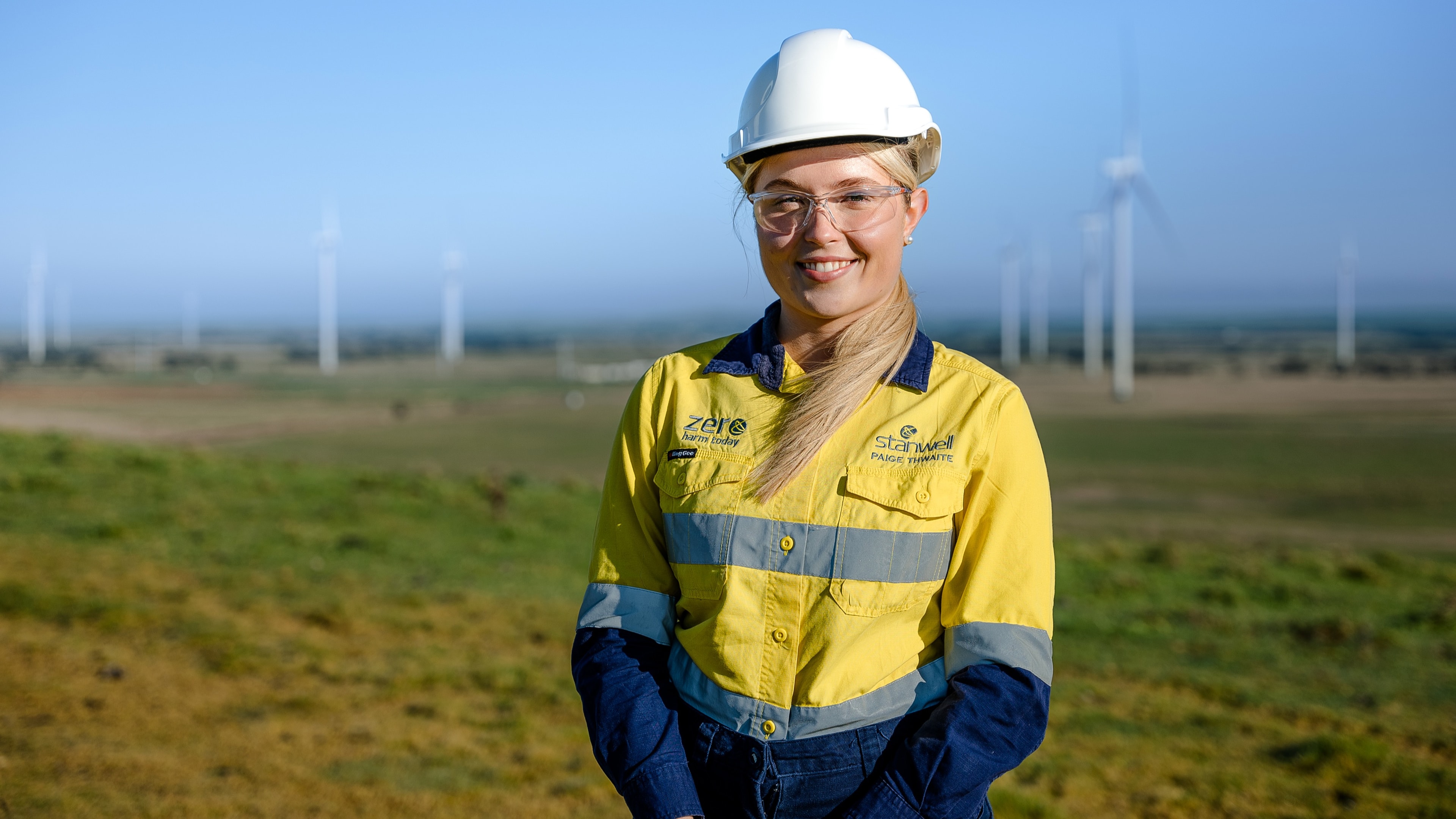On the right: Paige: Meet SAMCo’s Client Champion
On the right: Paige: Meet SAMCo’s Client Champion

At just 20, Paige Thwaite is already making waves in the renewable energy sector. While her official title at SAMCo is Renewables Maintenance Service Officer for Growth & Future Energy, at the heart of it all, she’s a client champion – and her role is pivotal in ensuring SAMCo’s operations a customer-centric and shaping how SAMCo positions itself in the market. Here’s a closer look at Paige’s journey so far.
Paige’s career began right after finishing high school in 2021, when she secured a business traineeship in the Stakeholder Engagement team at Stanwell Power Station.
“I was there for nearly two years, completing my Cert IV in Business,” Paige recalls. Her initial role involved stakeholder consultation within the community, which she found deeply fulfilling. “I valued the opportunity to engage with the communities that surrounded our assets and hearing about the passion they had for community growth and development,” she shares.
Transitioning from school to the workforce brought its own set of challenges. “Tailoring your communication to different parts of the business can be challenging,” she admits, “but it’s also an opportunity for growth and learning.”
As SAMCo – Stanwell’s Asset Maintenance Company – ramped up its operations, they were on the lookout for someone to handle administrative tasks and drive client and workforce engagement activities. Paige applied and successfully transitioned into her current role in September 2023.
“I’ve been in this role ever since,” she says, “and am currently balancing those responsibilities with studying a Bachelor of Communication.”
A day in the life of a Client Champion
Paige’s typical day at SAMCo is dynamic and multifaceted.
Her responsibilities include working closely with SAMCo’s clients and team members to prepare reports, proposals and other critical communications. She also manages purchase orders and invoicing, booking travel for the development pathway crew, and taking care of ISO accreditation – whatever it takes to keep SAMCo running smoothly on a day-to-day basis.
In everything Paige does, she channels her inner “customer voice” to ensure SAMCo’s communications and operations revolve around improving our client experience and exceeding customer expectations.
Towards the end of the week, Paige focuses on planning client communications and updates for the following week and brainstorming new ideas to creatively engage our clients.
“I’m currently creating scholarships with CQU and QUT to help build our pipeline of talent for the future – with a particular focus on ensuring we are an inclusive workplace for more women and Aboriginal and Torres Strait Islander people. I also take the lead on planning team days so we are clear and on target to achieve our goals. I’ve been particularly busy recently arranging training and onboarding for our rapidly growing team of Travelling Service Technicians,” she adds. Her role is essential in maintaining SAMCo’s reputation and client satisfaction, and ensuring all communications reflect the company’s values.
One of Paige’s most significant career highlights came when she was just 18 years old, and was involved in planning Stanwell’s 30th anniversary celebration. This event, attended by then-Premier Annastasia Palaszczuk and community members, marked a significant milestone for both Stanwell and Paige.
“It meant a lot to me that I was trusted to do that,” she says proudly, “and it all turned out very well. It was a worthy celebration of 30 years, so that was absolutely a highlight.”
Looking ahead, Paige is excited about future projects and initiatives at SAMCo.
“We’re working towards getting a trainee, intern or additional support within our team next year, and my manager wants to help me develop my leadership skills, which is exciting,” she notes. “I see my role evolving to meet new challenges and opportunities as SAMCo continues to grow its O&M footprint across Queensland.”
Paige’s path from business trainee to a key player in SAMCo’s renewable energy maintenance team showcases her dedication and adaptability – and it’s exactly those qualities that will help to shape the company as we move towards our clean energy future.
Subscribe to our newsletter
STANWELL SPARK
Stay up to date with quarterly news from Stanwell, delivered straight to your inbox. Learn more about our projects, partnerships and how we're delivering affordable, reliable and secure electricity for Queensland.